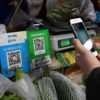The 2020 initiative is being led by Christian Cotichini, CEO of HeroX and Niki Werkheiser, program executive of NASA’s Game Changing Development Program. This follows on from a series of schemes running since 2011:
The “Honey, I Shrunk the NASA Payload” challenge is seeking instrument designs that could help support a sustained human lunar presence, demonstrate and advance the use of resources found on the Moon, and enable new science. To learn more, Digital Journal caught up with Andrew Shapiro, Manager of Technology Formulation, JPL (Jet Propulsion Lab).
Digital Journal: Please can you explain what does the NASA Tournament Lab does?
Andrew Shapiro: NASA Tournament Lab (NTL) facilitates the use of crowdsourcing to tackle NASA challenges. Since 2011, NASA’s researchers, scientists, and engineers have launched numerous challenges through NTL, often seeking novel ideas or solutions to accelerate research and development efforts, improve algorithm performance, and seek new ideas and approaches in support of the NASA mission. NTL offers a wide variety of open innovation platforms that engage the crowdsourcing community in challenges to create the most innovative, efficient and optimized solutions for specific, real-world challenges being faced by NASA and other Federal Agencies.
DJ: Why is there such interest in exploring Moon habitability?
Shapiro: As human space exploration evolves toward a permanent presence on the lunar surface, In situ Resource Utilization (ISRU) will become increasingly important. Resupply missions are very expensive. We need to develop practical and affordable ways to identify and use lunar resources, so that our astronaut crews can become more independent of Earth. Future astronauts have to be able to locate and collect lunar resources and then transform them into the essentials for life: breathable air, water for drinking and food production, building materials for shelter, rocket propellants, and more. Our mission capabilities will rapidly increase when useful products can be created from in-situ resources.
The ability to prospect, map, and characterize these in-situ resources not only increases NASA’s progress towards a sustained presence on the moon, but also could revolutionize mining, purification systems, the pharmaceutical industry, and other commercial industries – much as we realized enormous technological benefits and advances from the Apollo Program. NASA has issued this challenge to the global community to develop miniaturized payloads that can be sent to the moon in the next 1-4 years and bridge lunar strategic knowledge gaps.
DJ: What was the reason behind the Honey, I Shrunk the NASA Payload challenge?
Shapiro:NASA would like these next-generation payloads to do more than just deploy sensors and collect information about the lunar environment. Continued advancement of lunar and space exploration requires demonstrations of new technologies that can be employed outside of Earth. Miniaturized payload proposals that actively run relevant experiments, or demonstrate new instrumentation in a lunar environment are highly desirable. Additionally, these miniaturized payloads will likely also be useful for asteroid exploration, mars exploration, and potentially even for exploration in further out places like Enceladus and Europa.
DJ: What do you hope the challenge will deliver?
Shapiro:Payloads that support prospecting for resources that help support a sustained human presence are highly desirable, in addition to payloads that enable lunar science, demonstrate new technologies and/or advance the use of resources found on the moon (in-situ resource utilization, ISRU). While the focus of this challenge is on the moon, the results of this challenge will likely also be useful for asteroid exploration and mars exploration.
DJ: Why was a crowdsourcing site selected for launch the challenge?
Shapiro:There is substantial interest from NASA to get innovative ideas from the external community outside of NASA, and public competition is also a good way of reducing costs. Crowdsourcing can be a cost-effective way of getting things done.
DJ: What has the take-up been to date?
Shapiro:You can see the total number of people who have followed or signed up for the challenge here.













